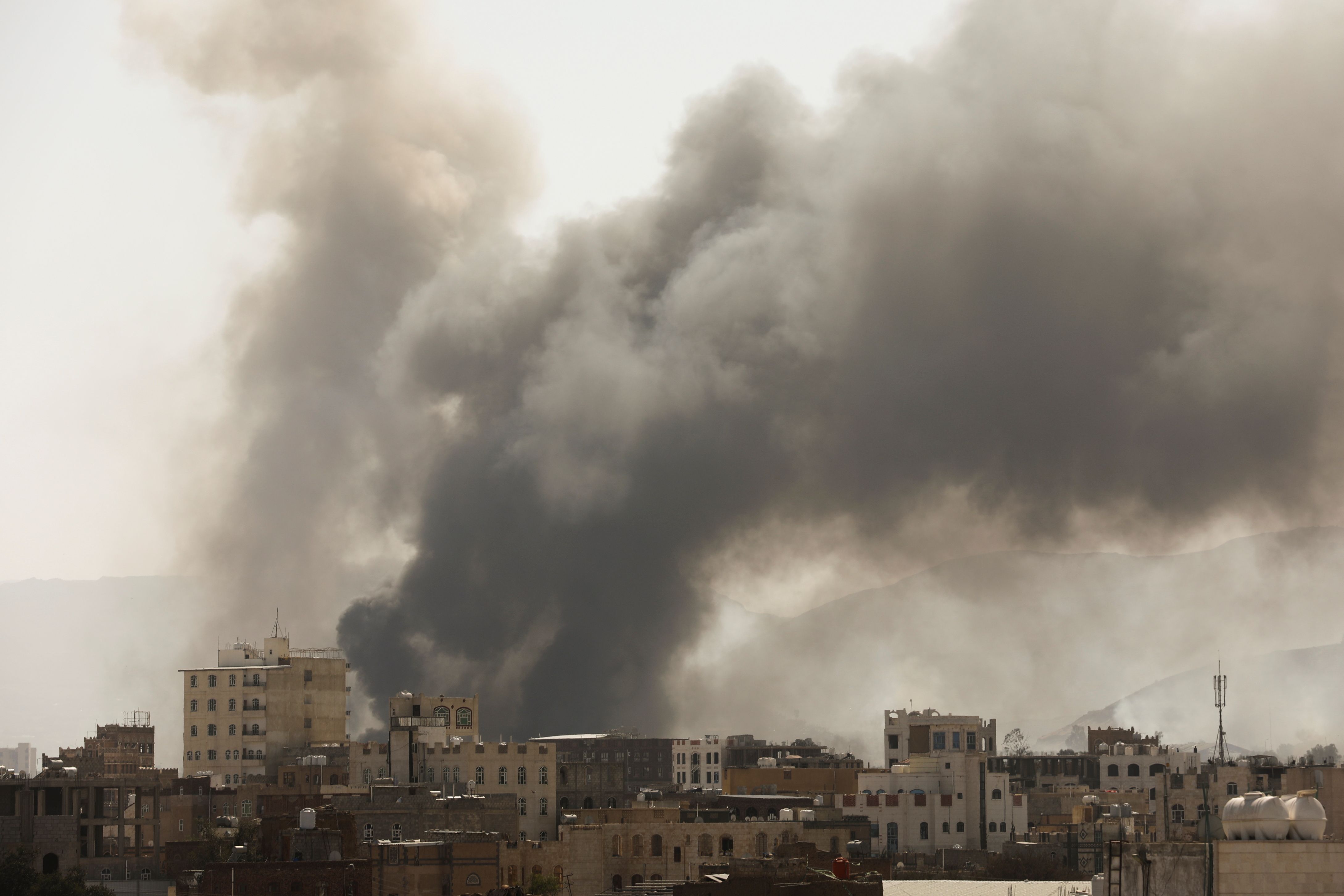The Future of the Conflict in Yemen after the Change of U.S. Administration

Characteristics of the Conflict
The war in Yemen, seen mainly in the context of Saudi Arabia’s rivalry with Iran, is primarily a conflict between local political and military groups. In 2012, the then-president, Ali Abdullah Saleh, resigned after the outbreak of the Arab Spring protests. The role of interim head of state was taken over by Abdrabbuh Mansur Hadi, who was to lead the transformation of the country agreed through the Gulf Cooperation Council. However, in 2013, during the National Dialogue Conference held to agree on a new constitution, no agreement was reached on the division of powers. A year later, the Shiite group Ansar Allah (the so-called Houthis) occupied most of the capital city of Sanaa and the most populous areas of the country. The Houthi movement, which was established in the 1980s as part of a religious revival of the Yemeni Zaydis (one of the Shiite factions, about 40% of the population), opposed the Saleh regime for years, and from 2004 to 2010 it rose up against it six times. However, in 2014, the group joined forces with the former president, which was to allow him to regain his role as Yemen’s leader (in 2017, the Houthis murdered Saleh, accusing him of trying to reach an agreement with Saudi Arabia). The Houthis’ activities were financially and militarily supported by Iran. The presence of this organisation near the southern border of Saudi Arabia prompted the country in 2015 to form a coalition of Arab states to combat the Houthis and restore a government that favoured Saudi Arabia. The intervention initiated by Saudi Arabia led to an escalation of the conflict. At the same time, the separatist Southern Temporary Council (STC) emerged from the Yemeni forces fighting the Houthis, seizing the port city of Aden in 2017 and demanding independence for the southern part of the country—a return to the situation before unification in 1990.
American Involvement in the Conflict
Efforts to resolve the conflict in Yemen are one of the Middle East priorities of the new U.S. administration. At the turn of February to March this year, Timothy Lenderking, appointed by Biden as the first American Special Envoy for Yemen, travelled to the Gulf states for conflict talks. During the election campaign, Biden announced he would end the sale of weapons to Saudi Arabia and the UAE due to accusations the states bombed civilian facilities. After assuming the presidency, he suspended the implementation of contracts worth around $22.8 billion. At the same time, he declared that the U.S. would continue to support the Saudi defence capabilities.
Biden’s criticism of Saudi Arabia and the UAE’s involvement in the war in Yemen is a turning point in the U.S. approach to the Gulf states. For former President Donald Trump, supporting the Saudi-led coalition was part of his “maximum pressure” policy on Iran and the transactional approach that dominated his relations with Arab monarchies. The president three times vetoed congressional bills that would have suspended the sale of American weapons to Saudi Arabia, arguing his decision as protecting industry. The sale continued even though the coalition forces in Yemen were responsible for the majority of the 15,000 civilian deaths in the conflict (according to the UN High Commissioner for Human Rights). A few days before Trump left office, he added the Houthis to the list of foreign terrorist organisations despite warnings from aid organisations that this could deepen the humanitarian crisis. The removal of the Houthis from the list was, in turn, one of the first decisions announced by the new U.S. secretary of state, Antony Blinken, who emphasised that the Biden administration intends to seek a diplomatic solution to the conflict.
The War in Yemen and the Regional Rivalry
Iran’s support of the Houthis is part of its strategy of increasing regional influence and control over Middle Eastern trade routes, including the Bab al-Mandeb strait, key to exports from Arab states and Israel to Asia. In turn, the possibility of the Houthis seizing power poses a threat to Saudi state security. Before the outbreak of the war, during the first uprisings against Saleh, the Houthis attacked Saudi border provinces, accusing the Kingdom of supporting the Yemen government's hostile actions. In recent years, with the involvement of Iran, the Houthis have developed capabilities to attack major Saudi cities with long-range ballistic and manoeuvring missiles. When the group launched a missile towards Riyadh in 2017, Saudi Arabia initiated a blockade of Yemen by land, sea, and air. This contributed to a famine that has affected about 17 million out of Yemen’s 28 million inhabitants. The Houthis are also backed by the Iran-tied Lebanese Hezbollah. Its members have conducted trainings for the Houthis and a small number of them remain in Yemen. In southern Yemen, the separatist STC forces were in turn backed by the UAE, allowing the Emirates to increase access to the trade routes. UAE support for the STC sparked controversy between the UAE’s traditional allies and Saudi Arabia.
The involvement of regional powers in the war made it necessary to take into account their interests in the peace process. This is indicated by the agreement signed in Riyadh in 2019 between the STC and the Hadi government supported by Saudi Arabia, which provides for equal participation of members of both parties in the government. The deal was in the interest of Saudi Arabia, which feared that the dispute between the STC and the Hadi government would weaken the coalition's actions against the Houthi. Members of the government appointed in 2020 are controlled by representatives of the Saudi-led coalition, and the STC rejected some of Hadi’s nominations. At the beginning of this year, contrary to the provisions of the agreement, the STC established a military force in Aden that would not be subject to the new government. At the same time, the only initiative of the dialogue on the Yemen conflict in which Iran has participated so far was its talks with European countries in the E3+ format (UK, France, Germany plus Italy).
Conclusions and Perspectives
The shift in U.S. policy towards the Persian Gulf states indicates that Biden will not return to supporting the activities of the Arab coalition in the near future. The administration will want to use this in the negotiations with Iran over the renewal of the nuclear deal. However, the appointment of a special envoy for Yemen means that the U.S. does not see the conflict in Yemen solely through the prism of the rivalry with Iran. The new administration will conduct diplomatic activities involving local and regional actors primarily in order to contain the humanitarian disaster. This may include increasing U.S. aid and brokerage in ceasefire negotiations. For these actions to be effective, it is necessary to refer not only to the activities of the Houthis but also to the dispute between the STC and the Hadi government. Although the two groups may act together against the Houthis in the near future, the roots of the conflict between them have not been eliminated. The STC’s formation of a new military group in Aden threatens the success of the Riyadh Agreement and confirms that the independence of South Yemen remains a priority for the STC.
Removing the Houthis from the list of terrorist organisations will help avoid a deepening of the humanitarian catastrophe, but for the peace process to succeed, it will be necessary to account for war crimes committed both by the Arab coalition and by Ansar Allah members. At the same time, the Houthis, who enjoy the widespread support of the Yemeni Zaydis, will have to be included in the peace negotiations, assuming their de-radicalisation.
The end of the war in Yemen can be accelerated by EU support for the U.S. actions, including encouraging Member States to also limit arms sales to Saudi Arabia and the UAE (i.e., to defensive weapons only). The withdrawal of the Arab coalition from Yemen may also be conducive to the announcement that the interests of Saudi Arabia and the UAE will be taken into account in the nuclear deal with Iran. In addition, the EU can use the existing platform for dialogue with Iran to involve it in wider talks on the conflict in Yemen.


